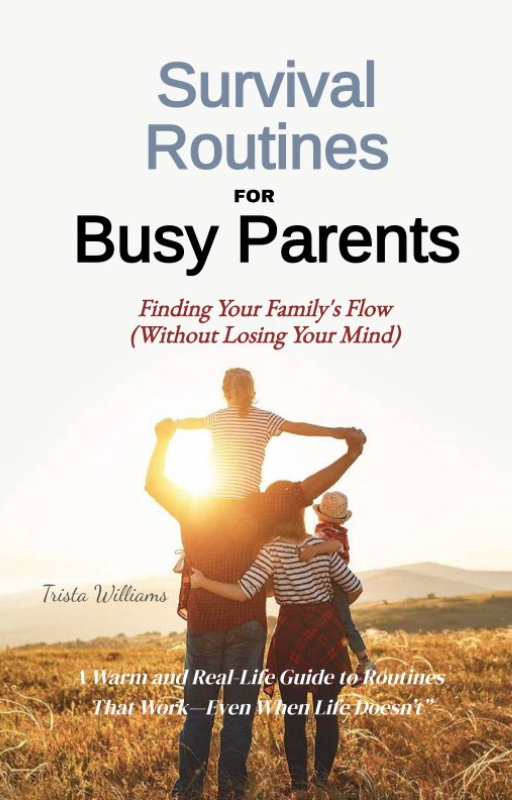Parenting Styles: Understanding, Adapting, and Thriving as a Parent
Have you ever wondered why some parents seem so calm and flexible while others keep a tight grip on routines and rules? Or maybe you’ve thought to yourself, “Am I being too strict? Or not strict enough?”

Every parent has a unique way of guiding, teaching, and connecting with their child. These patterns—how we respond to challenges, set expectations, and show love—are often called parenting styles.
Understand that when you are learning about parenting styles it’s about fitting into that perfect box or earning a gold star for “best parent.”
It’s about recognizing what’s working for you and your child and making the necessary adjustments that can help your child to thrive.
Let’s consider the 4 main parenting styles, how to figure out your own, and how to use that knowledge to build a stronger relationship with your child.
| Parenting Style | Short Description | Example in Daily Life |
|---|---|---|
| Authoritative | Warm and responsive, sets clear boundaries, listens to the child’s perspective. | Bedtime: Explains why sleep is important, offers a 15-minute wind-down before lights out. |
| Authoritarian | Strict rules, expects obedience, little room for negotiation. | Bedtime: “It’s 8 p.m. Go to bed now. No discussion.” |
| Permissive | Very warm, few rules, lets the child lead decisions. | Bedtime: “You can stay up as long as you want—just try not to be too tired tomorrow.” |
| Uninvolved | Minimal guidance or emotional connection, often distant. | Bedtime: Doesn’t notice or care when the child goes to bed. |
A Closer Look at the Four Main Parenting Styles
1. Authoritative Parenting
- Definition: Combines warmth and support with firm, consistent boundaries.
- Pros: Builds independence, encourages open communication, supports emotional health.
- Cons: Takes more time and patience; can feel exhausting at first.
- Example: When your child forgets homework, you talk through what happened and help them plan a solution, rather than punishing or ignoring it.
2. Authoritarian Parenting
- Definition: High demands, low responsiveness; rules are strict and not open for discussion.
- Pros: Can provide structure and clear expectations.
- Cons: A child may be less confident, less independent and have difficulty solving daily problems.
- Example: When kids question rules, you respond with “Because I said so.”
3. Permissive Parenting
- Definition: Warm and nurturing but with few rules or consequences.
- Pros: Strong emotional bond, child feels loved and accepted.
- Cons: May lead to poor self-discipline and difficulty with authority.
- Example: You give in to dessert before dinner because “it’s just one night.”
4. Uninvolved Parenting
- Definition: Low warmth and low control; minimal involvement in a child’s life.
- Pros: Encourages independence (sometimes too early).
- Cons: Children may feel neglected and lack guidance.
- Example: You hardly ever check homework or go to school events.
Find Your Parenting Style: Self‑Assessment Quiz
Choose the answer that fits you best for each statement. Your score updates instantly. There are 15 questions. "Often" = 3 points, "Sometimes" = 2 points, "Rarely" = 1 point. (Reverse‑scored items are noted.)
Answer the questions above. Your score and guidance will appear here as you go.
Which Parenting Style Is Best?
Research consistently points to authoritative parenting as the most effective overall. Children raised in authoritative homes often develop strong social skills, good emotional regulation, and a healthy sense of responsibility.
But here’s the truth—most parents aren’t 100% one style. You might be authoritative about homework, permissive about screen time, and authoritarian about safety rules.
That’s okay. Parenting is a blend, and your style can evolve as you and your child grow.
How to Improve Your Parenting Style

If you want to be more authoritative:
- Explain your reasoning behind rules
- Offer choices within boundaries
- Praise effort as well as results
If you want to be less authoritarian:
- Ask for your child’s input
- Allow small, safe mistakes
- Use calm discussion instead of commands
If you want to be less permissive:
- Set clear expectations and follow through
- Create consistent routines
- Balance freedom with responsibility
If you want to be less uninvolved:
- Schedule daily one-on-one time
- Show interest in school and hobbies
- Offer guidance, not just independence
What the Research Says
Diana Baumrind’s early studies in the 1960s laid the foundation for parenting style theory.
Researcher’s were later able to show that children raised in authoritative homes usually perform better academically, show stronger emotional health and have fewer behavioural problems.
However, it also shows that culture, personality and life circumstances will shape the final outcome. No single style guarantees success for every child.
Parenting Styles in Different Cultures & Modern Life
Parenting styles can look very different across cultures. In some communities, an authoritarian approach is seen as respectful and loving.
Where as others prefer the permissive style to promote creativity and independence.
Modern life also throws in new challenges—screen time limits, social media pressures, busy family schedules—all of which can influence how we parent day-to-day.
Blending Parenting Styles
Most parents naturally blend styles depending on the situation. You might be strict about safety but relaxed about clothing choices.
Consistency in your core values is what matters most—by providing guidance, communicating with your child and showing them love.
Parenting Styles Conclusion
Parenting is a journey, not a final exam. To get insight into your habits, you need to fully understand parenting styles.
Small shifts—listening more, setting clear limits, connecting daily—can make a huge difference in your child’s confidence and well-being.
No matter where you start, remember this: you are your child’s most important influence, and every day is a new chance to guide with love and purpose.






























New! Comments
Have your say about what you just read! Leave me a comment in the box below.